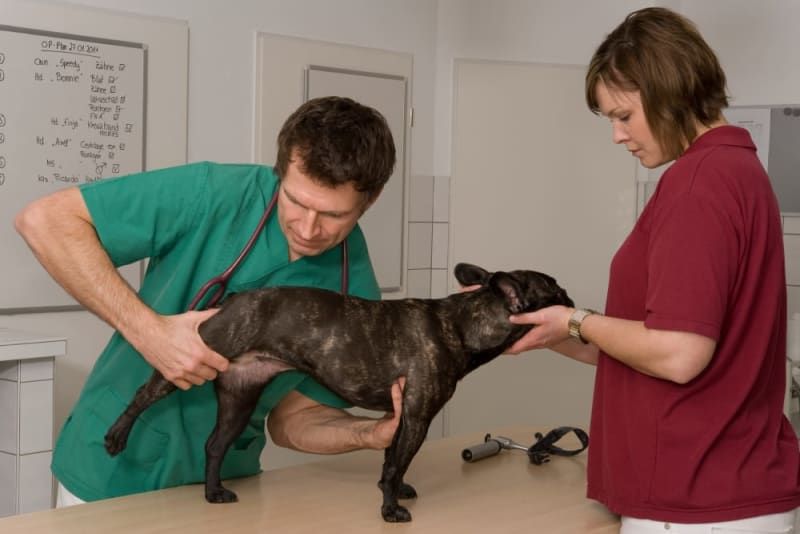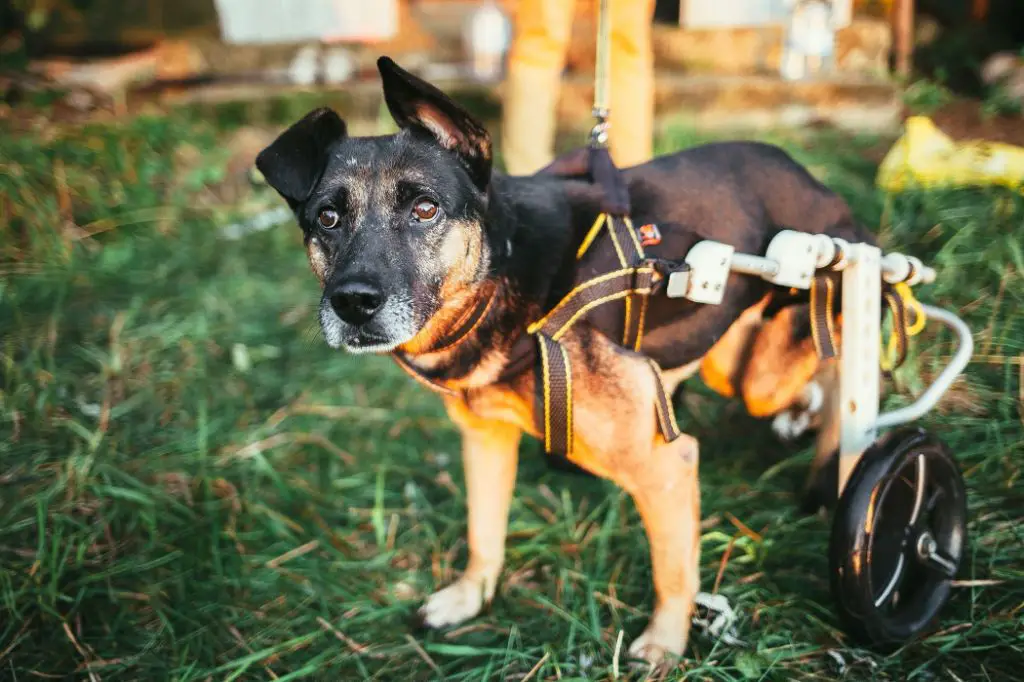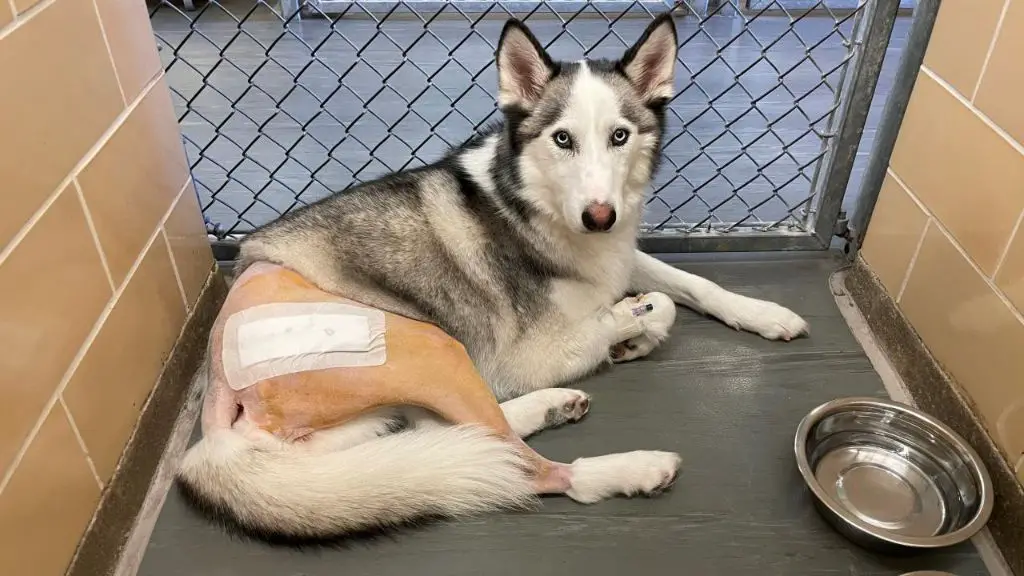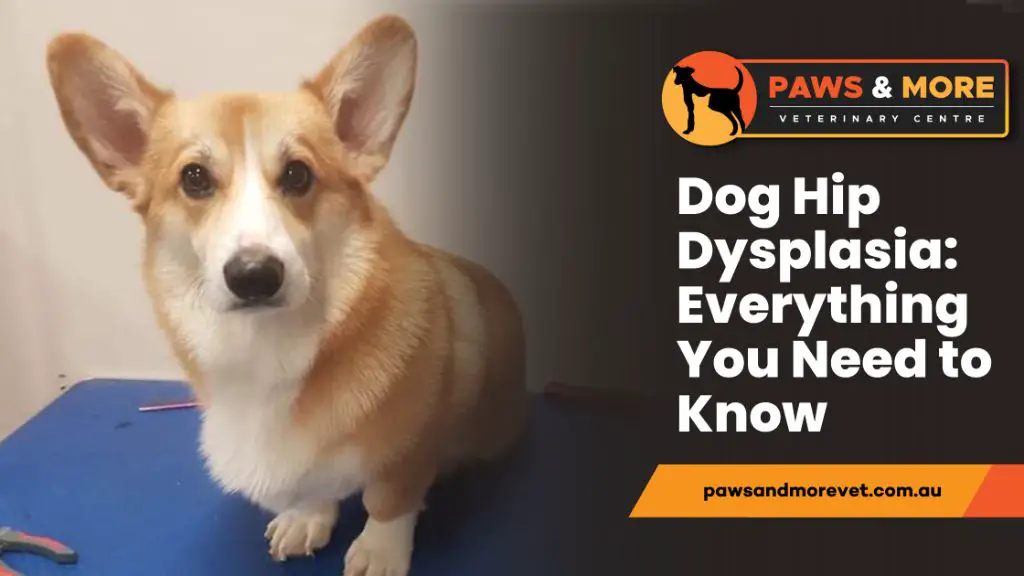What is hip dysplasia in dogs?
Hip dysplasia is a condition where the hip joint does not develop properly, leading to looseness and instability in the joint. It is one of the most common orthopedic diseases in dogs.
The main causes of hip dysplasia are genetic factors and improper nutrition/overfeeding during a dog’s growth period. However, environmental factors like obesity and excessive exercise can worsen the condition.
Common symptoms of hip dysplasia include limping, bunny hopping, trouble standing up or laying down, loss of thigh muscle mass, and pain. A veterinarian will diagnose it through physical examination and X-rays of the hip joints.
On X-rays, a dysplastic hip joint will show looseness and poor congruity between the ball and socket joint. There may also be signs of arthritis beginning to develop.
Is hip dysplasia reversible?
In some mild to moderate cases, hip dysplasia in dogs can be reversed or managed through non-surgical treatments. However, severe cases often require surgery to realign the hip joint and increase mobility. The degree to which hip dysplasia can be reversed depends on several factors:
Age at diagnosis – The younger the dog is when diagnosed, the better the chances for reversing dysplasia before arthritis sets in. Puppies and juvenile dogs have the most potential for bone and joint remodeling.
Severity – Mild cases focused on joint laxity may respond well to non-surgical treatments. Moderate joint incongruity can sometimes be reversed with surgery. Severe dysplasia with significant osteoarthritis is difficult to fully reverse but surgery and meds can potentially slow progression.
Speed of progression – Rapidly worsening dysplasia is harder to reverse than slow, mild changes over time. Fast progression leads to more inflammation and arthritis.
Overall health – Dogs who are otherwise healthy have better surgical outcomes and ability to heal than dogs with comorbidities.
While not curable, many dogs with hip dysplasia can live happy lives with managed pain and mobility when diagnosed and treated early. Even dogs with severe dysplasia can see improved comfort and function after surgery and lifestyle modifications.

Non-surgical treatments
There are several non-surgical treatment options for dogs with hip dysplasia that can help manage symptoms and slow the progression of arthritis. These include:
Weight management
Keeping your dog at an optimal body weight is crucial. Excess weight puts more pressure on the joints and can accelerate arthritis. Work with your vet to determine a healthy target weight for your dog and adjust their diet accordingly.
Exercise restriction
Limiting exercise, especially high-impact activities like running and jumping, can reduce pain and inflammation. Low-impact exercise like leash walks and swimming are usually recommended.
Physical therapy
Canine physical therapy improves joint mobility and muscle strength. Therapists may use massage, stretching, therapeutic exercises, and other techniques tailored to your dog.
Medications
Non-steroidal anti-inflammatory drugs (NSAIDs), joint supplements, and other medications can relieve pain and inflammation under veterinary supervision.
Surgical options
There are a few surgical procedures that can be performed on dogs to treat hip dysplasia. The type of surgery depends on the dog’s age, size, degree of arthritis, and lung function.
Triple pelvic osteotomy
A triple pelvic osteotomy (TPO) realigns the hip socket to provide better coverage of the femoral head. This surgery is typically done on young dogs before osteoarthritis develops. During the procedure, the pelvis is cut in three places and rotated to provide better coverage. TPO allows normal hip function and delays the progression of osteoarthritis.
Femoral head ostectomy
A femoral head ostectomy (FHO) removes the femoral head and neck to eliminate bone-to-bone contact in the joint. The femoral head is the ball part of the ball-and-socket hip joint. Over time, scar tissue forms to create a false joint. FHO is commonly done on smaller dogs or as a salvage procedure in dogs with severe osteoarthritis.
Total hip replacement
Total hip replacement involves removing the femoral head and replacing it with a prosthetic hip implant. The acetabulum is also resurfaced. This restores normal hip function and eliminates pain. Total hip replacement is done on larger breed dogs over 50 pounds with advanced arthritis and significant lameness or pain.
Success Rates
The success rate for reversing hip dysplasia in dogs depends on the severity of the condition, the age of the dog, and the treatment method used. Here are some statistics on success rates:
Non-Surgical Treatments
– Weight management and exercise restriction in mild cases can lead to improvement in 60-80% of dogs under 1 year old. Effectiveness decreases as the dog ages.
– Physical therapy and anti-inflammatory medications may lead to temporary improvement in lameness and pain in 50-70% of dogs. But dysplasia will likely progress without surgery.
Surgical Options
– For young dogs with mild to moderate dysplasia, triple pelvic osteotomy (TPO) has an 80-90% success rate in eliminating or significantly reducing pain and lameness.

– Total hip replacement is considered successful if limb function is restored and pain is eliminated or managed with minimal medication. Success rates are around 90%.
– Juvenile pubic symphysiodesis, which alters hip joint development, has varying reported success rates of 60-85% in reducing signs of lameness.
The best success comes with early intervention. Dogs with severe osteoarthritis may continue to experience some lameness and discomfort despite treatment. But most dogs have greatly improved mobility and quality of life after corrective surgery.
Cost
The cost of treating hip dysplasia in dogs can vary greatly depending on the severity of the condition and whether surgical or non-surgical options are pursued. Here’s a look at the estimated costs:
Non-Surgical Treatments
Non-surgical treatments like nutritional supplements, anti-inflammatory medications, physiotherapy, and low-impact exercise can range from $50-150 per month. These options manage symptoms but don’t correct underlying joint issues.
Surgical Options
Surgery is necessary in moderate to severe cases of hip dysplasia and costs between $1,500-$5,000+ per hip. Common surgical procedures include:
- Triple pelvic osteotomy ($3,000-$5,000)
- Femoral head ostectomy ($2,000-$3,000)
- Total hip replacement ($3,500-$6,000+)

Bilateral procedures (both hips) and complex reconstruction surgeries are at the highest end of the cost spectrum. Additional expenses like X-rays, medications, post-op care, and physical therapy also add to the total.
Pet health insurance can offset some of these costs depending on the plan. Out-of-pocket expenses can be financially challenging, so it’s important to discuss budget and financing options with your vet.
Recovery
The recovery period after hip dysplasia surgery can take several weeks to months depending on the age and health of your dog. Here are some general timeframes and restrictions to expect during the recovery process:
Exercise Restrictions: Your vet will likely restrict your dog’s activity for 4-6 weeks after surgery to allow the joint to heal. Your dog will need to be kept quiet, with only short leash walks allowed. Running, jumping, playing, and stairs should be avoided during this time.
Confinement: Your dog may need to be confined to a crate or small room during initial weeks of recovery to restrict activity and prevent reinjury. Your vet can advise you on the appropriate length of strict confinement.
Physical Therapy: Your vet may prescribe stretching, massage, and other physiotherapy to help strengthen the joint and prevent atrophy. This may start 4-6 weeks after surgery and continue for several months.
Time to Full Recovery: While your dog may seem back to normal within 2-3 months, the full healing process usually takes around 6 months. Their activity should be gradually increased over this time.
Patience and close adherence to your vet’s recovery instructions are crucial to ensure your dog fully regains mobility and joint function after surgery. With proper post-op care, most dogs with hip dysplasia can go on to live active, happy lives.
Lifestyle Modifications
Making some changes to your dog’s daily routine and environment can help manage hip dysplasia symptoms. Here are some recommendations:
Exercise
Regular, low-impact exercise like leash walks and swimming can help maintain muscle mass and joint health without putting too much strain on the hips. Avoid activities like jogging, jumping, or playing fetch which can exacerbate joint pain and inflammation.
Diet
Make sure your dog maintains a healthy weight, as excess body fat puts more pressure on the hip joints. Consult your vet about prescription weight loss food or supplements like glucosamine that support joint health.
Environment
Provide soft, supportive bedding and use ramps or steps to avoid impact on the hips from jumping on/off furniture. Keep floors free of slick surfaces and consider non-slip booties to improve traction.
Prognosis
The long-term outlook for dogs with hip dysplasia depends significantly on whether they receive treatment and the type of treatment pursued. With appropriate treatment and lifestyle adjustments, many dogs with hip dysplasia can lead active, happy lives. However, without treatment, the condition tends to worsen over time.
For dogs who undergo surgery, such as total hip replacement, prognosis is generally good if the surgery is performed while the dog is still relatively young and not yet suffering from severe osteoarthritis. With surgical treatment, most dogs will regain excellent function in the hip joint. However, surgery cannot entirely halt the progression of hip dysplasia if the dog’s skeleton is still growing. Lifelong monitoring and pain management may still be needed.

Without surgery, dysplastic hip joints will continue worsening over time. Arthritis will set in and dogs will experience significant pain, disability, and loss of function. Their activity levels and quality of life will decline. Weight management and medication can help control pain and inflammation, but cannot stop the degenerative joint changes associated with untreated hip dysplasia. Non-surgical options may provide some relief, but likely not a full return to normal function.
Early intervention and diligent treatment give dogs with hip dysplasia the best chance of living active, high-quality lives. Catching the condition before arthritis develops improves the prognosis. Committing to lifelong management, whether surgical or non-surgical, is key to ensuring dogs with hip dysplasia have the best possible long-term outcomes.
Prevention
There are several ways to help prevent hip dysplasia in dogs:
Breeding Practices
Responsible breeders should screen for hip dysplasia before breeding. Selecting dogs with healthy hips for breeding can reduce the incidence of hip dysplasia. Avoiding breeding two dogs with hip dysplasia can also decrease the chances of the condition being passed to offspring.
Exercising Puppies Appropriately
Over-exercising puppies before their growth plates close can put too much stress on developing joints. Free running and jumping should be avoided until a puppy is over a year old. Lower impact exercise like leash walks are safer for young puppies. Swimming is another good low impact option.
Maintaining Lean Body Weight
Extra body weight puts more strain on joints. Keeping dogs at an optimal lean body weight reduces the wear and tear on the hips. Overweight dogs have a higher risk of developing hip dysplasia.